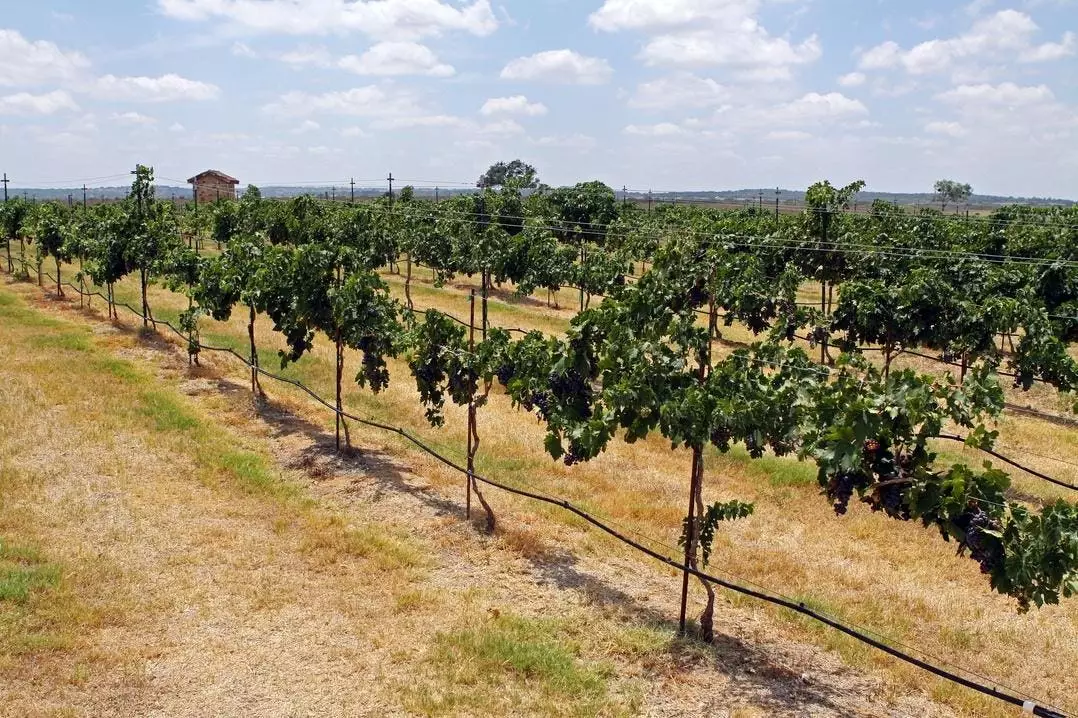Wine cultivation is an art that marries tradition with innovation, and few places embody this synergy better than the Texas Hill Country. In November 2024, I had the distinct pleasure of taking Dr. Erika Szymanki, author of “From Terrain to Brain: Forays into the Many Sciences of Wine,” on an insightful tour of this burgeoning wine region. As someone who has collaborated with several Texas wineries on sustainability initiatives, I understandf the unique opportunities this region offers. The challenge was deciding where to take her amidst the myriad of talented wineries dotting the landscape.
To optimize our time and showcase the best of Texas wine, I focused our journey on the scenic Highway 290 corridor, particularly around Stonewall, Hye, and Johnson City. While there are numerous wineries to explore, our itinerary was limited to three: William Chris Vineyards, Ab Astris Winery, and Siboney Cellars. Each destination offered a distinctive experience that highlighted the quality and character of Texas wines.
Our first destination, William Chris Vineyards, exemplified Texas winemaking at its finest. Upon our arrival, Kelsey Kramer, the Director of Education, along with co-founder and master winemaker Chris Brundrett, welcomed us warmly. The enthusiasm and passion emanating from both the staff and the wines they poured were palpable. We sampled a selection of their 100% Texas wines, each exhibiting remarkable quality that reflects the terroir and the dedication of the vineyard team. My aim for this excursion was simple: to highlight Texas’s wine prowess to a discerning connoisseur, and William Chris did not disappoint.
Next on our itinerary was Ab Astris Winery, where the experience was nothing short of delightful. Mike Nelson, our host, guided us through a presentation that integrated scenic views and insightful commentary on the wines. Among the selections, the Fiano—a lesser-known grape variety—captured our taste buds with its immaculate crispness and lemony undertones. This surprise hit served as a testament to the diversity of grape varieties thriving in Texas. Whether one favors whites, reds, or rosés, Ab Astris consistently delivers wines that exemplify craftsmanship and quality.
This stop reaffirmed the notion that not all wines are created equal; the expertise of the winemaker can greatly enhance the overall tasting experience. Every sip at Ab Astris felt like a celebration of the craft, and it reinforced the idea that Texas wines are ripe for discovery, even if less familiar wines dominate the landscape.
The final stop of our day was Siboney Cellars, a unique venue known for its “Twilight Tasting” experience. Drenched in a dazzling ambiance, it’s a place that truly captivates its visitors. Winemaker Barbara Lecuona offered us an enticing glimpse into the production space, while Miguel Lecuona, head of “Service and Culture,” ensured our glasses were never empty. Siboney’s approach to hospitality is commendable, and every visit promises a feast for both the palate and the imagination.
Each glass of wine was accompanied by thoughtfully prepared small bites, creating an unforgettable synergy of flavors. The highlight was the camaraderie illustrated during our visit; it’s evident that wine brings people together, fostering a spirit of community, learning, and appreciation.
Questions often arise about which Texas wineries stand out as “good” options for exploration. While personal favorites abound, it’s essential to recognize that Texas boasts a rich tapestry of wine offerings that cater to various preferences. Newcomers to the Texas wine scene should approach with an open mind and a spirit of curiosity; numerous grape varieties, some of which may be unfamiliar, create an expansive palette to explore.
To assist enthusiasts on their wine journey, various excellent resources are available. Organizations such as Texas Wine Growers relentlessly promote and protect Texas’s unique vineyard landscape. Websites and apps like Texas Wine Lover provide invaluable information about wineries, and the “This is Texas Wine” podcast offers engaging insights about the people and processes behind Texas wine production.
For those venturing deeper into the academic aspects of Texas viticulture, “Texas in Transition: Considering the Production of Grapes, Wine, and Place” offers a thorough exploration of the state’s burgeoning wine culture, delving into geographical elements that shape its wines.
The Texas wine industry has seen tremendous growth over the last couple of decades, generating a substantial economic impact and earning recognition in the global wine community. The industry, valued at approximately $20 billion in 2022, showcases a commitment to preserving its identity and quality—hallmarks that enhance its reputation.
If you have yet to explore the delightful world of Texas wine, there’s no better time than now. With so much to discover, guided excursions like the one we enjoyed in the Hill Country offer just a glimpse into what this remarkable region has to offer. Whether you’re a seasoned connoisseur or a curious novice, Texas wine holds an adventure waiting to be tasted.

